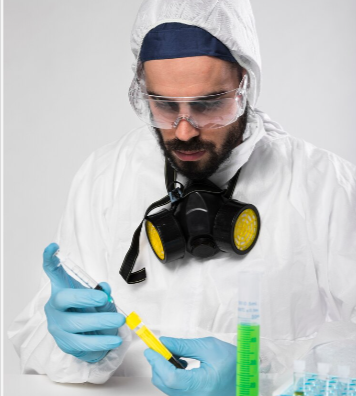You breathe in and out more than 20,000 times a day. Most of that happens inside your home. If the air around you isn’t clean, it can quietly affect your health, your comfort, and even your sleep. That’s why many homeowners are starting to take a closer look at indoor air. Air quality testing in Kitchener is becoming more common, especially for families who want peace of mind and a healthier living space.
What Is Indoor Air Testing?
Indoor air testing checks for harmful particles in the air you breathe inside your home. These can include dust, mold, pollen, gases, smoke, and even chemicals from household items. The goal is to find out if anything in the air is unsafe or irritating, especially for kids, older adults, or people with asthma and allergies.
Unlike outdoor air, which moves around freely, indoor air gets trapped. That means pollutants can build up without you noticing. Testing helps you find out what’s there, so you can fix it.
Common Signs Your Home Might Need an Air Test
Sometimes, you can smell or see signs of bad air. Other times, it’s hidden. Watch for these problems:
- Frequent coughing, sneezing, or breathing problems at home
- Headaches that improve when you leave the house
- Moldy or musty smells, especially in basements or bathrooms
- Visible mold or damp patches on walls or ceilings
- Smoke, dust, or strange fumes inside
- Pets that shed a lot or use litter boxes indoors
- You’re planning renovations or recently finished them
If any of these sound familiar, indoor air testing can give you answers.
What Air Tests Usually Check For
Air testing companies use tools to collect and study samples from the air inside your home. Here are the most common things they look for:
Mold Spores
Mold can grow in damp places like basements, bathrooms, and even inside walls. Breathing in mold spores may lead to coughing, sneezing, and other health issues.
Volatile Organic Compounds (VOCs)
These are gases released by paints, cleaners, furniture, or even carpets. Some VOCs can cause eye, nose, or throat irritation and make it hard to breathe.
Asbestos Fibers
Asbestos was used in older homes for insulation or flooring. When disturbed, it releases tiny fibers that can harm your lungs.
Carbon Monoxide
This gas is invisible and has no smell. It can leak from stoves, heaters, or fireplaces. High levels are dangerous.
Pet Dander and Dust Mites
Even if you clean often, these tiny particles can build up and make allergies worse.
Tobacco Smoke and Cooking Fumes
Smoke can stick to walls and surfaces. Even past smoking in the home can leave particles in the air.
Why Air Testing Matters for Families
You spend most of your time inside your home. If the air is poor, it affects how you feel every day. Testing can help prevent:
- Health issues: Allergies, asthma attacks, headaches, or long-term breathing problems
- Sleep troubles: Poor air can cause dry throat or nose issues at night
- Damage to your home: Mold and moisture problems can get worse over time
- Expensive repairs: Finding problems early can save money later
When you know what’s in your air, you can take small steps to make things better. That might include better ventilation, dehumidifiers, or removing harmful materials.
When to Get Indoor Air Checked
Air testing isn’t just for people with health problems. It’s useful in many situations:
- Before buying or selling a home: Knowing the air is clean helps you make better decisions
- After a flood or water leak: Moisture leads to mold, which spreads quickly
- During or after renovations: Construction can stir up dust, asbestos, or VOCs
- If someone in the home is often sick: Clean air can make a big difference
- If your home is near heavy traffic or industry: Outside pollutants can make their way inside
Even if everything seems fine, regular testing helps you stay ahead of potential issues.
Choosing the Right Air Testing Service
When looking for a testing company, go with one that offers full inspections. A good provider will:
- Use modern tools and methods
- Test for a range of particles and gases
- Offer detailed reports that are easy to understand
- Suggest clear next steps if a problem is found
Some companies may also recommend repairs or cleanup services. Others stick to testing only. You should always ask about their process and experience before booking.
How to Improve Indoor Air After Testing
If your test finds something in the air, you don’t always need a big fix. Here are simple things you can do:
- Open windows to let fresh air in
- Use exhaust fans in the kitchen and bathroom
- Get a high-quality air purifier
- Avoid smoking indoors
- Clean rugs and floors often
- Fix leaks or water damage right away
- Switch to low-VOC products for cleaning and painting
Even without test results, these habits can make your air cleaner.
Is Indoor Air Testing Expensive?
Cost depends on the size of your home and what you need tested. Most services offer basic packages and more detailed ones. While prices vary, many families say the peace of mind is worth it—especially if someone in the house has allergies or breathing issues.
The long-term value is also worth thinking about. Catching mold early, for example, can prevent thousands of dollars in home damage. And if you’re selling your house, a clean air report can be a big plus for buyers.
You Can’t See It, But It Might Be Harming Your Family
Breathing clean air should be simple. But many homes have hidden problems that you can’t smell or see. That’s why air quality testing in Kitchener is an important step for anyone who wants a safer, healthier home. You don’t have to wait until something goes wrong to take action.
If you’re not sure where to begin, you can speak to a trusted local expert. MSN Environmental is one option known for clear testing, helpful reports, and friendly service. Clean air starts with knowing what’s in your home—and testing is the first step.











